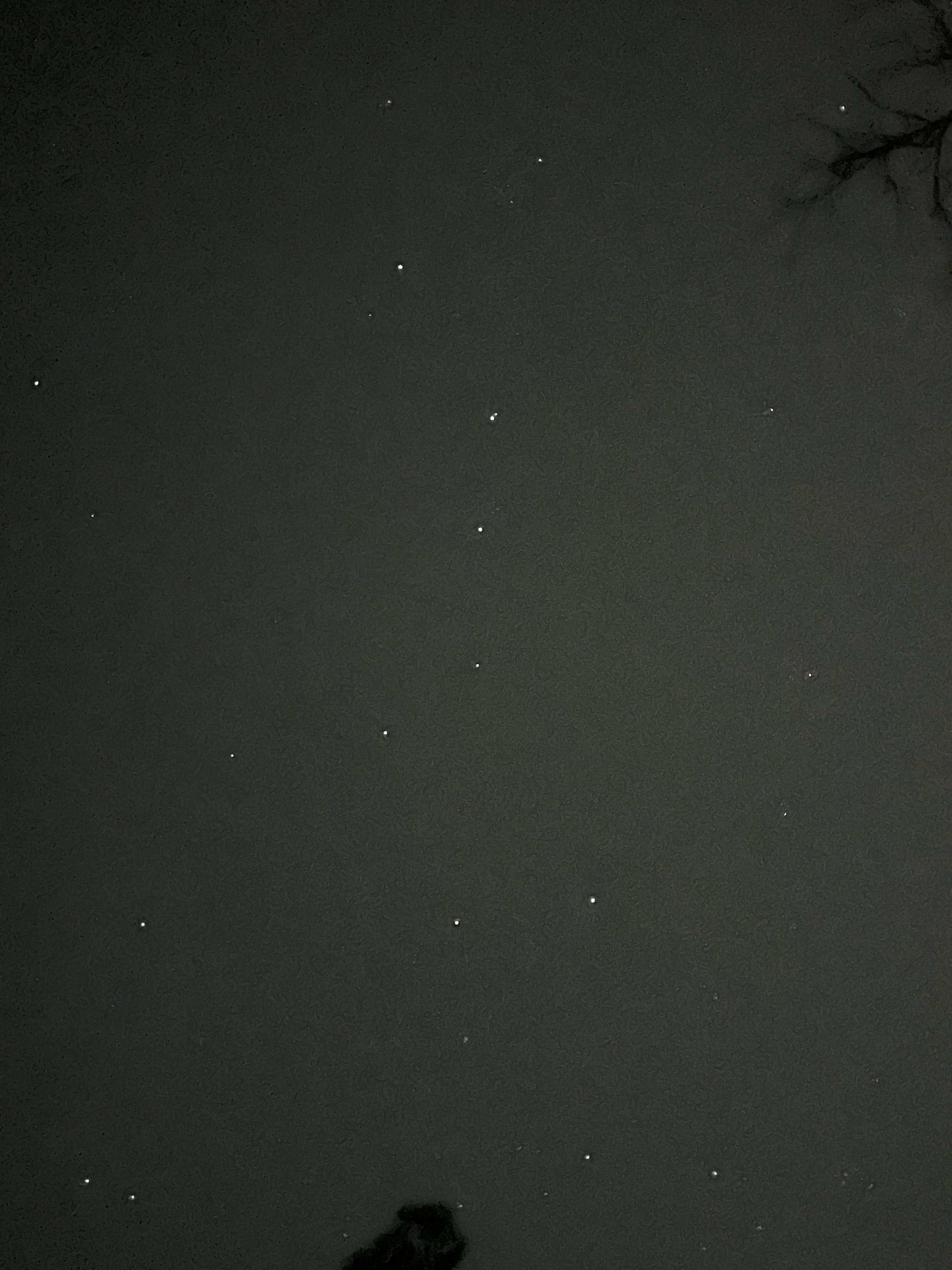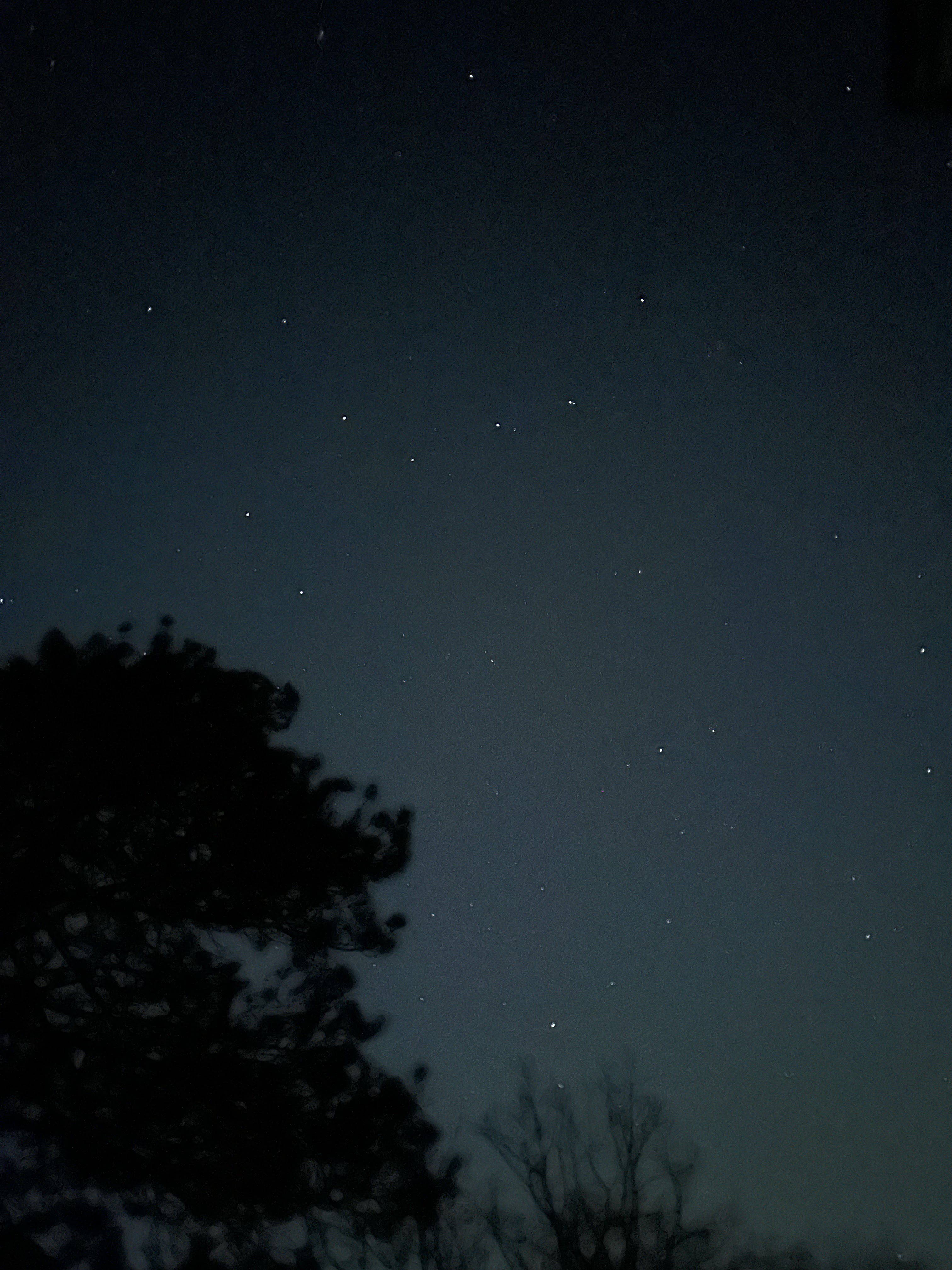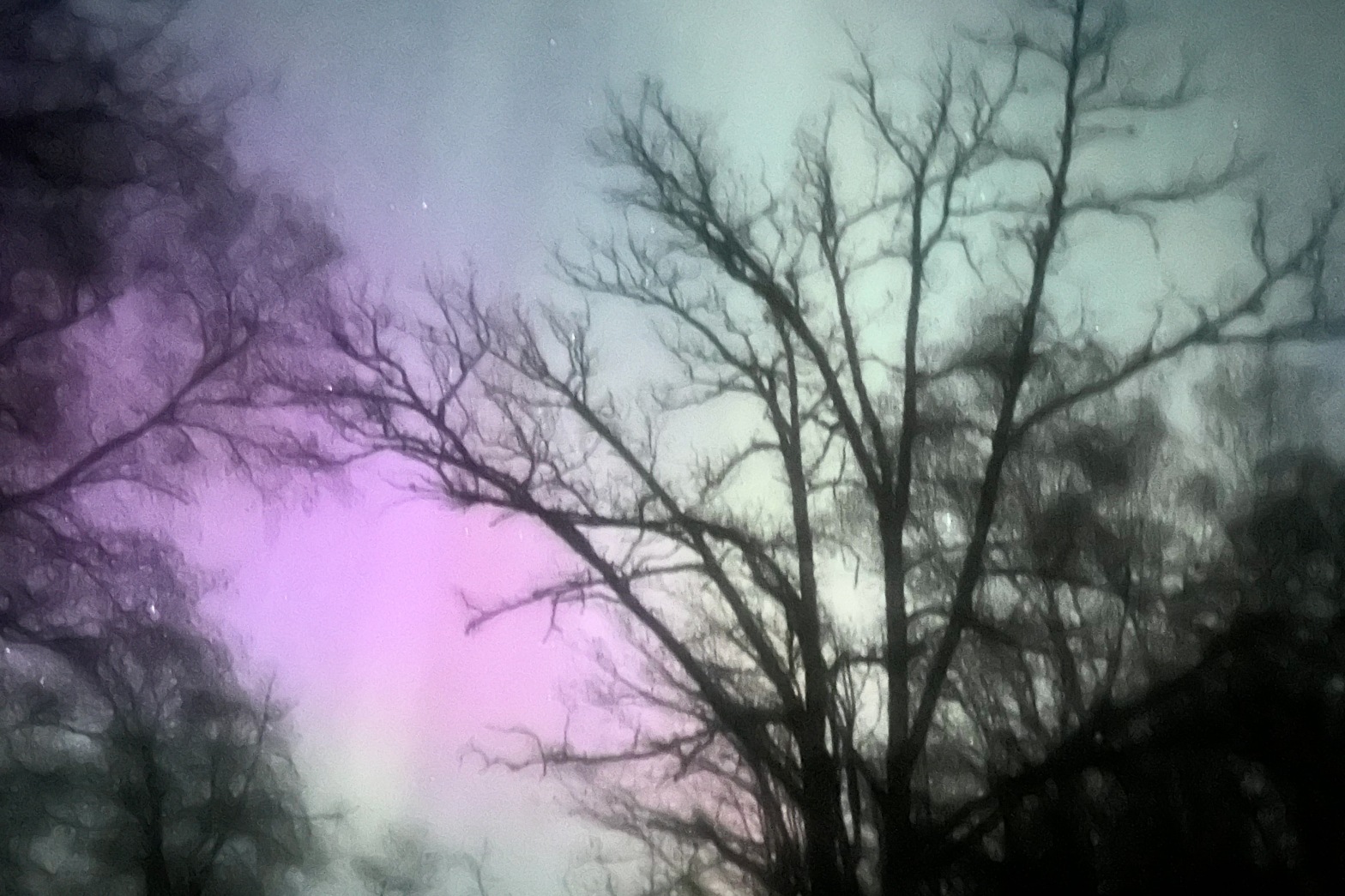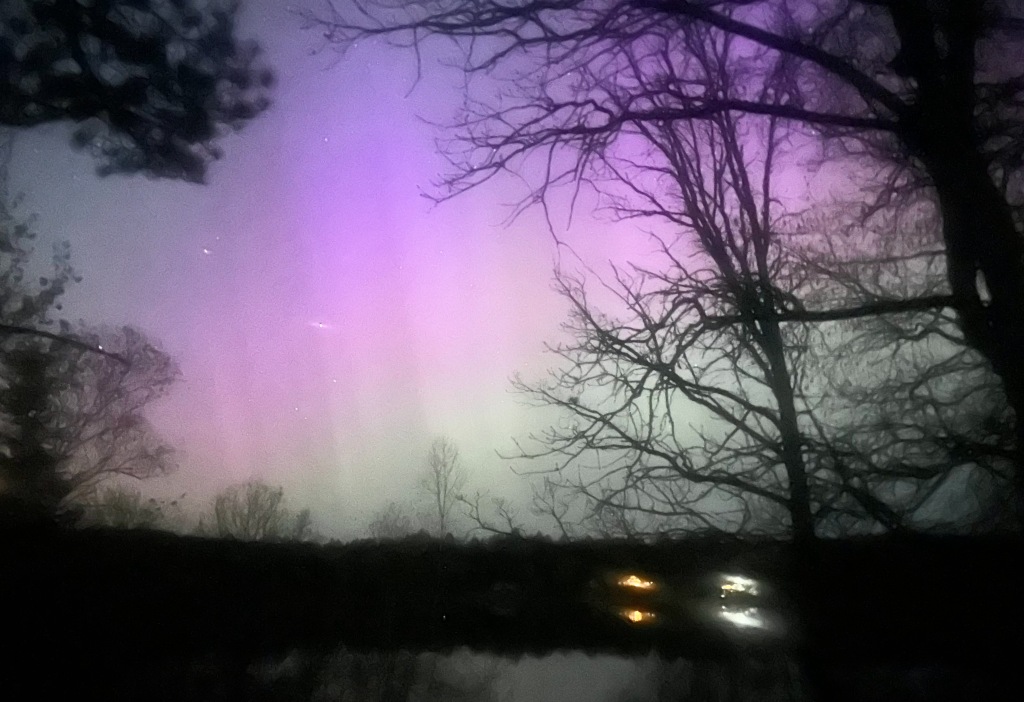
The exceptional show of Northern Lights (Aurora Borealis) over the last few days has been covered extensively in the news. The reason for this event is traced back to sunspot activity, specifically in a sunspot cluster designated Region 3664, which is at least 15 times wider than the earth! Solar flares and Coronal Mass Ejections (CME) associated with these sunspots recently ejected huge amounts of energy and charged particles into space.
CME, which are massive expulsions of charged particles from the sun, are primarily responsible for the aurora on Earth. CME produce huge clouds of charged particles that fly away from the sun at high speeds, but always considerably slower than the speed of light. Light carrying information about CME reaches earth in 8.3 minutes, while the charged particle clouds from CME typically take a day or two to reach earth. So, we can see the CME particles coming, and make accurate predictions of the aurora they will cause.
When these charged particles near earth, they are steered towards the poles by the earth’s magnetic field. At heights of 60-620 miles above earth the particles collide with atoms in earth’s atmosphere sending these atoms (mainly nitrogen and oxygen) into excited states. When the excited atoms return to their ground states, they emit the colored light that comprise the aurora.
Friday, May 10
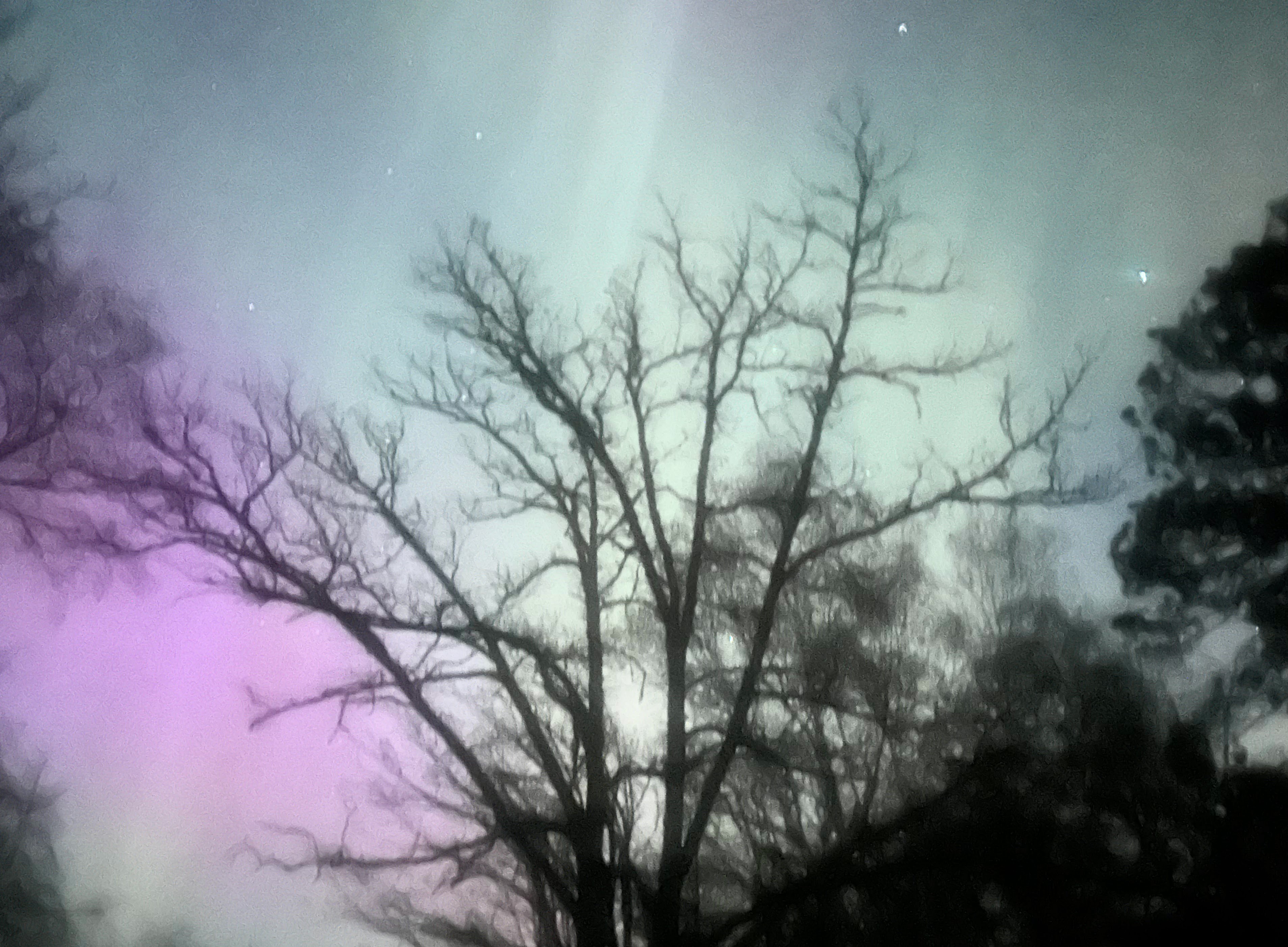
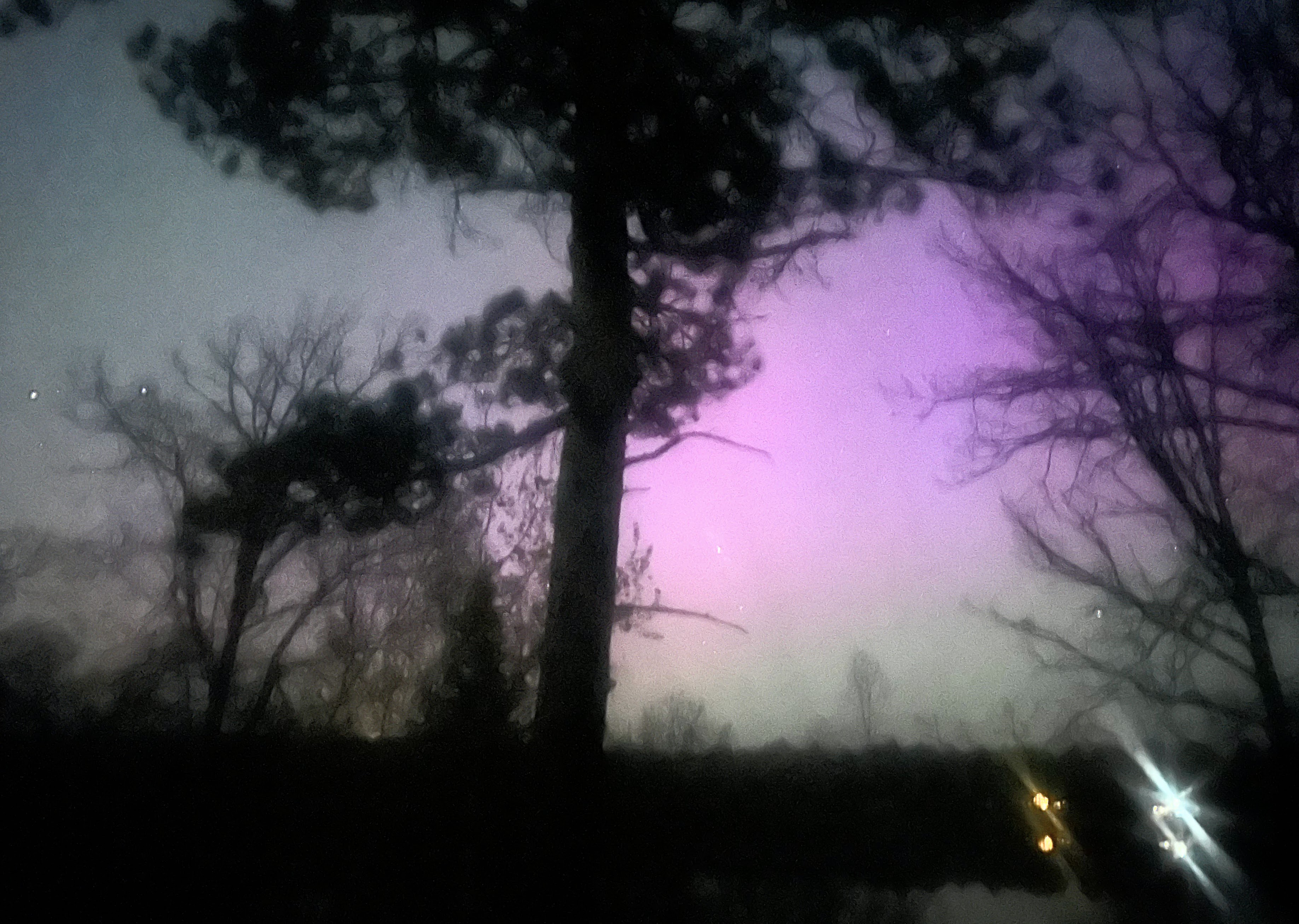
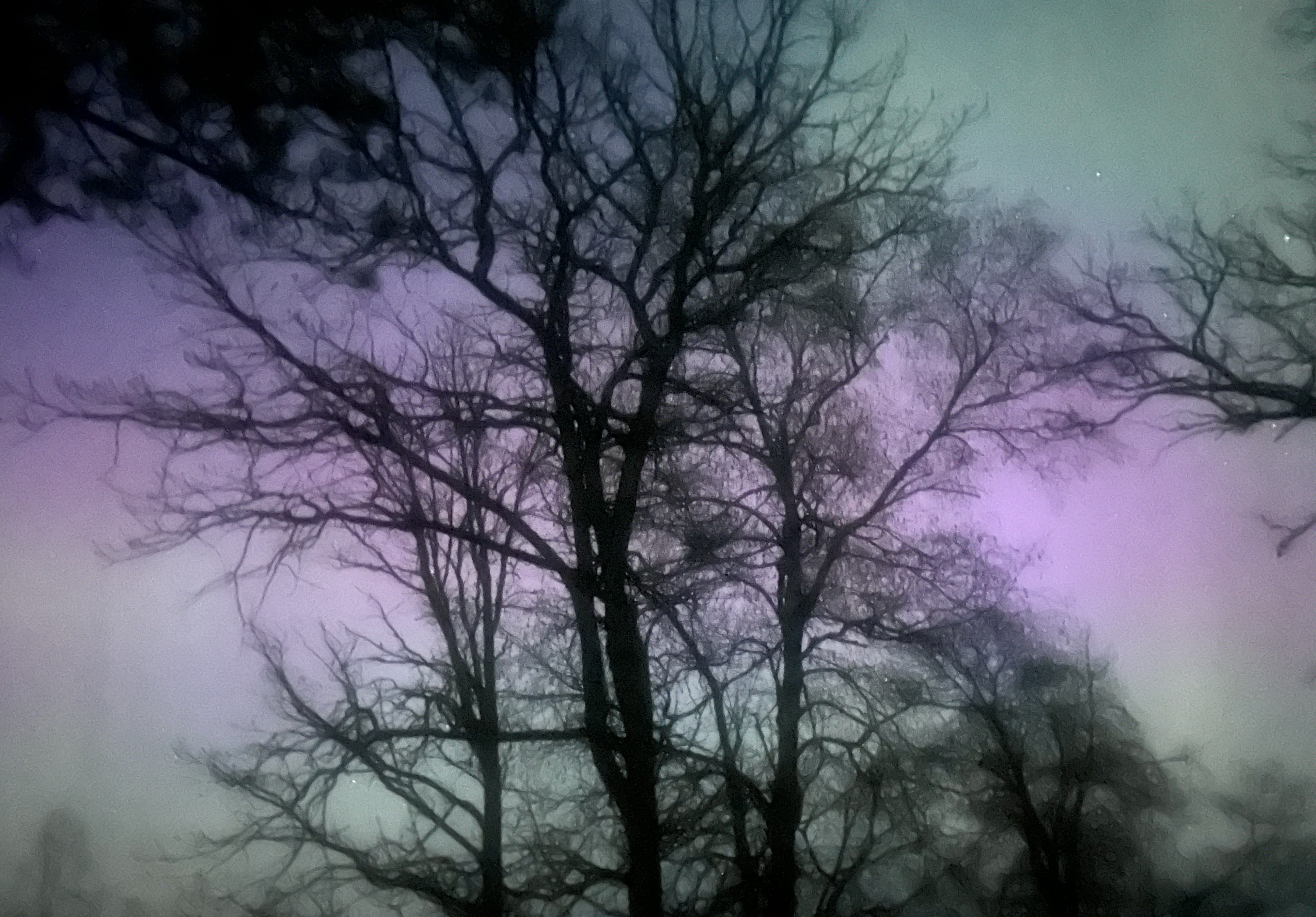
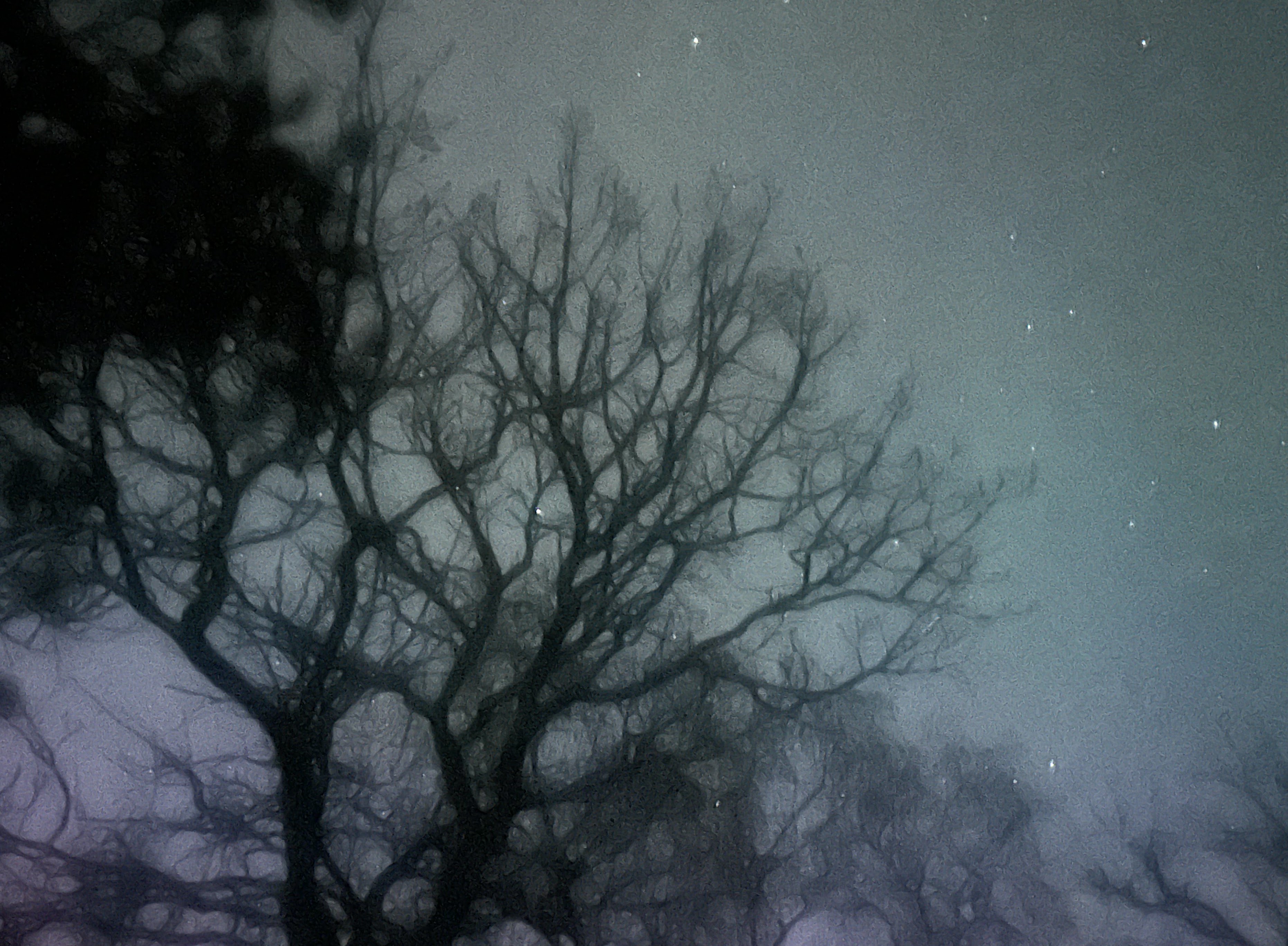
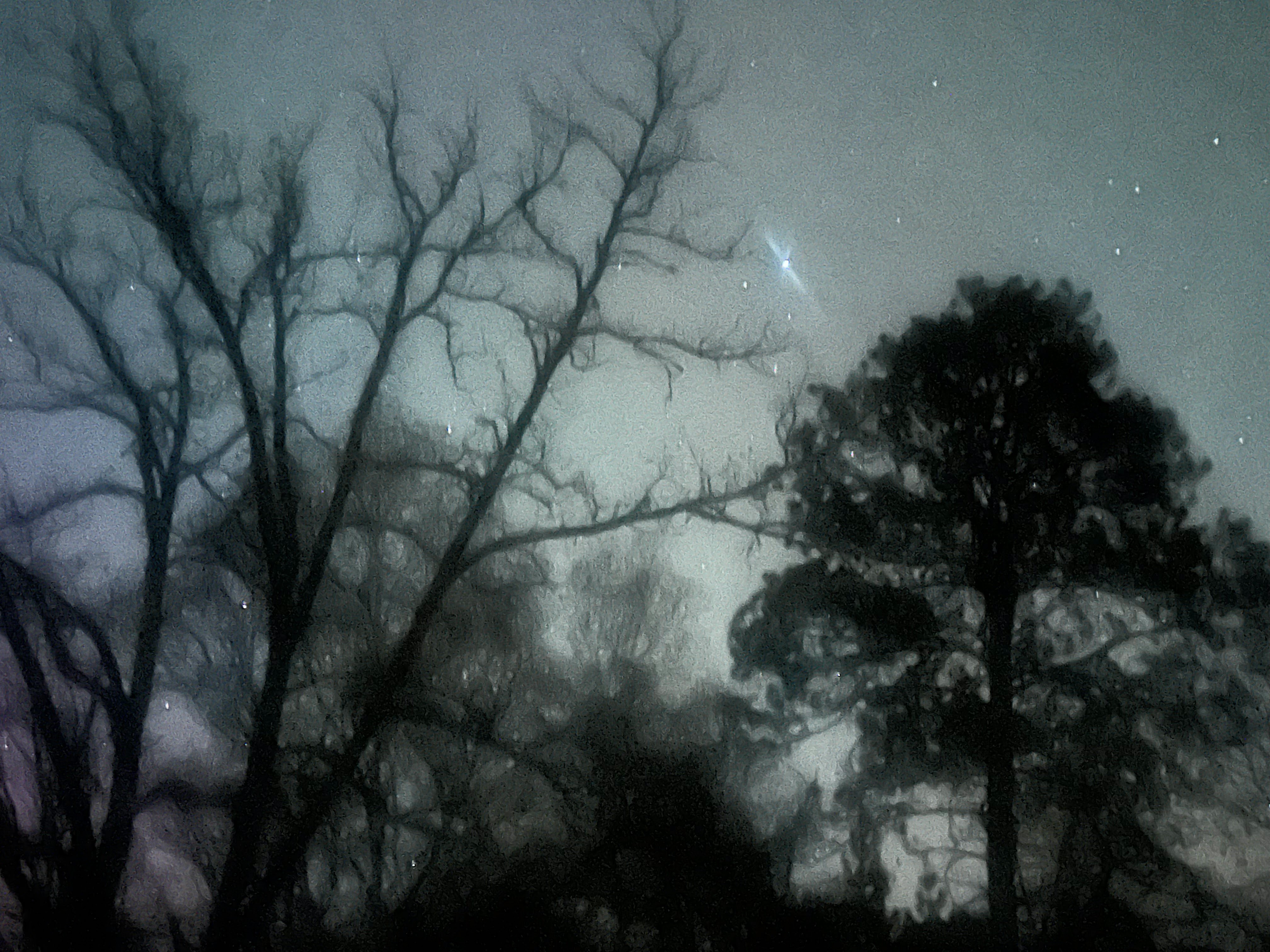
The pictures above were taken Friday night looking north across the lake from our deck. The colors of the Northern Lights come out nicely in these pictures, but by naked eye I could just see that the sky was unusually bright.
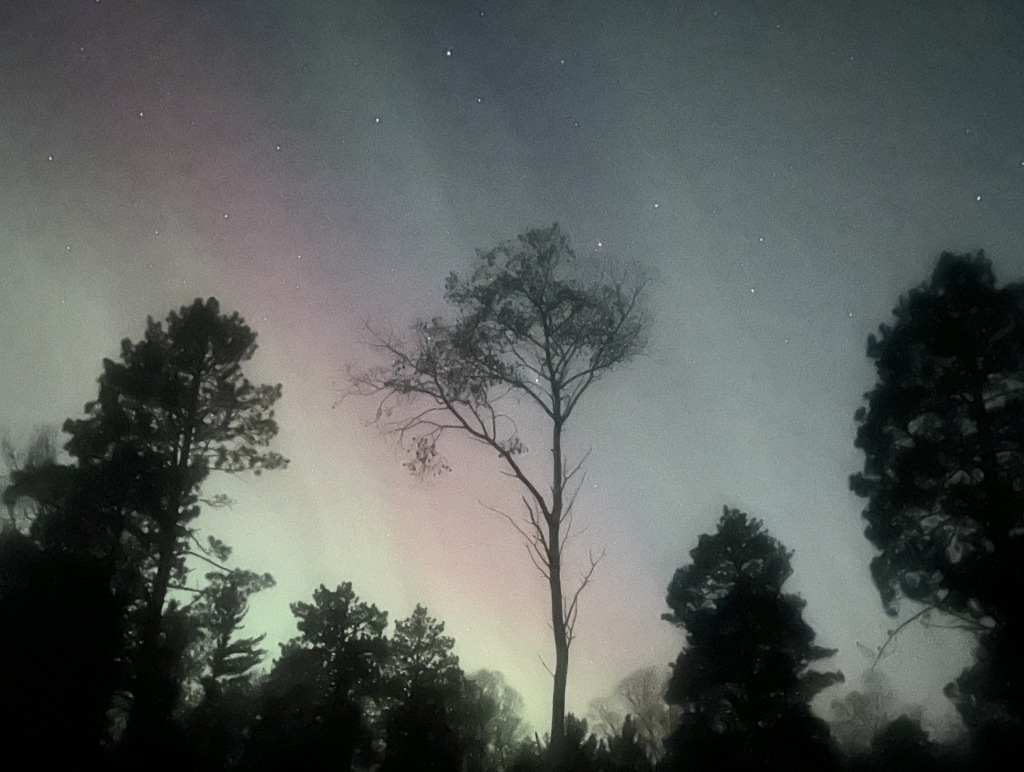
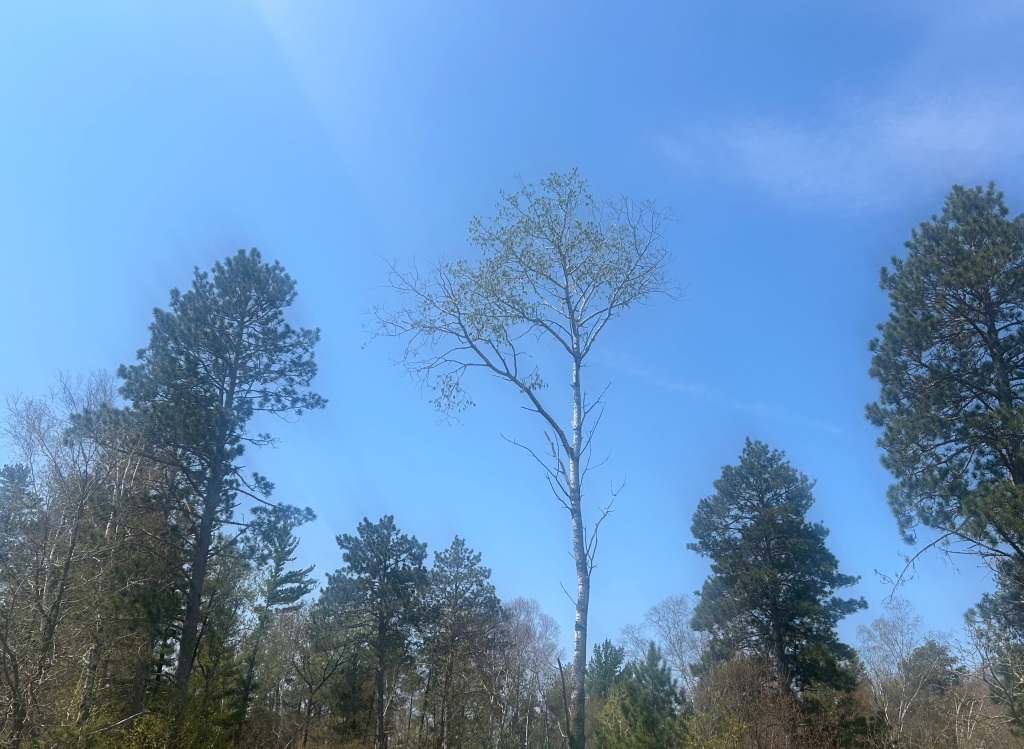
The Northern Lights were evident towards the west as well. The image to the left is the night sky Friday around midnight, and the image on the right shows the scene in daylight on Saturday.
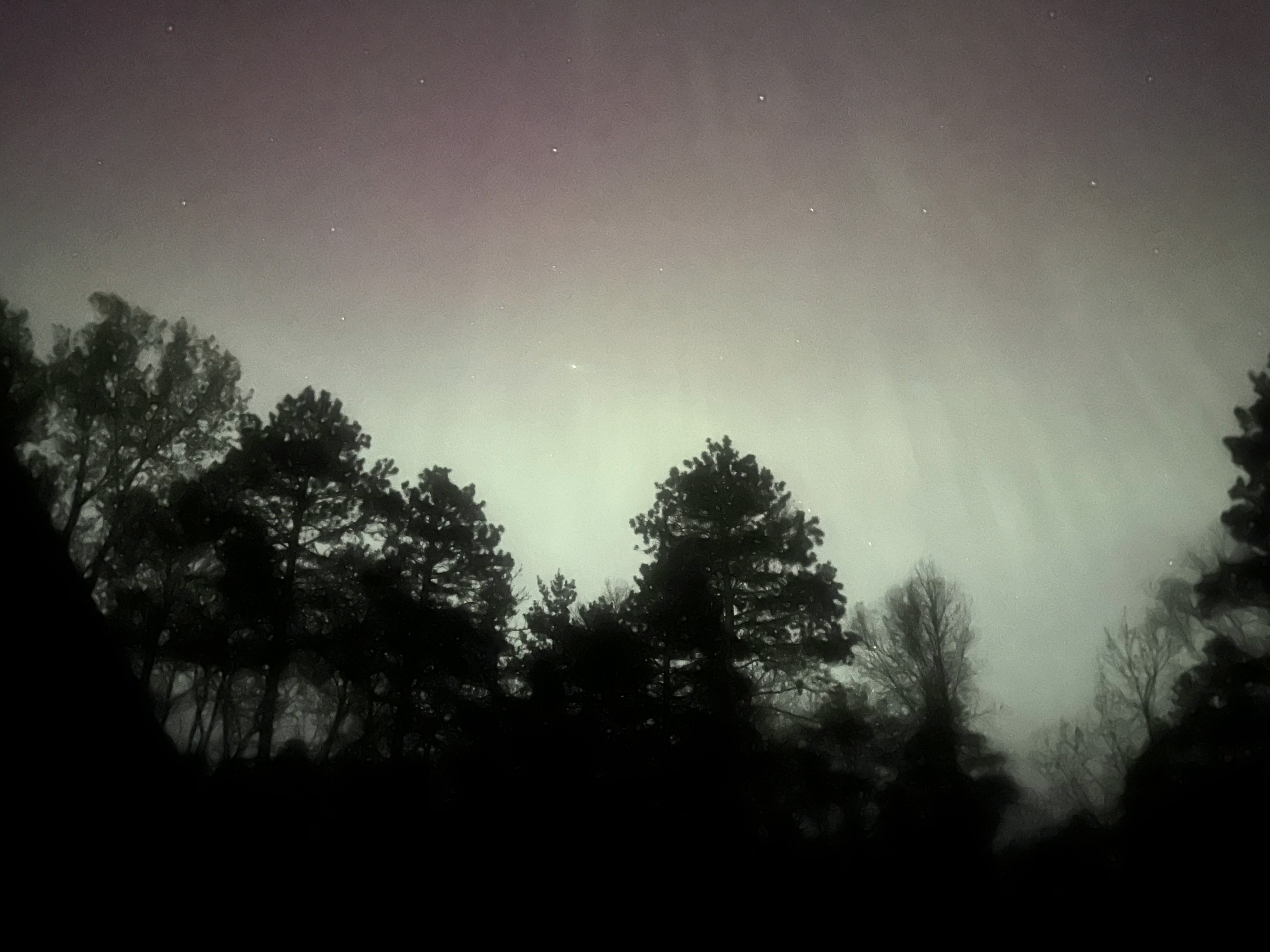
Looking south, the night sky was brighter than usual, but not colorful.
Saturday, May 11
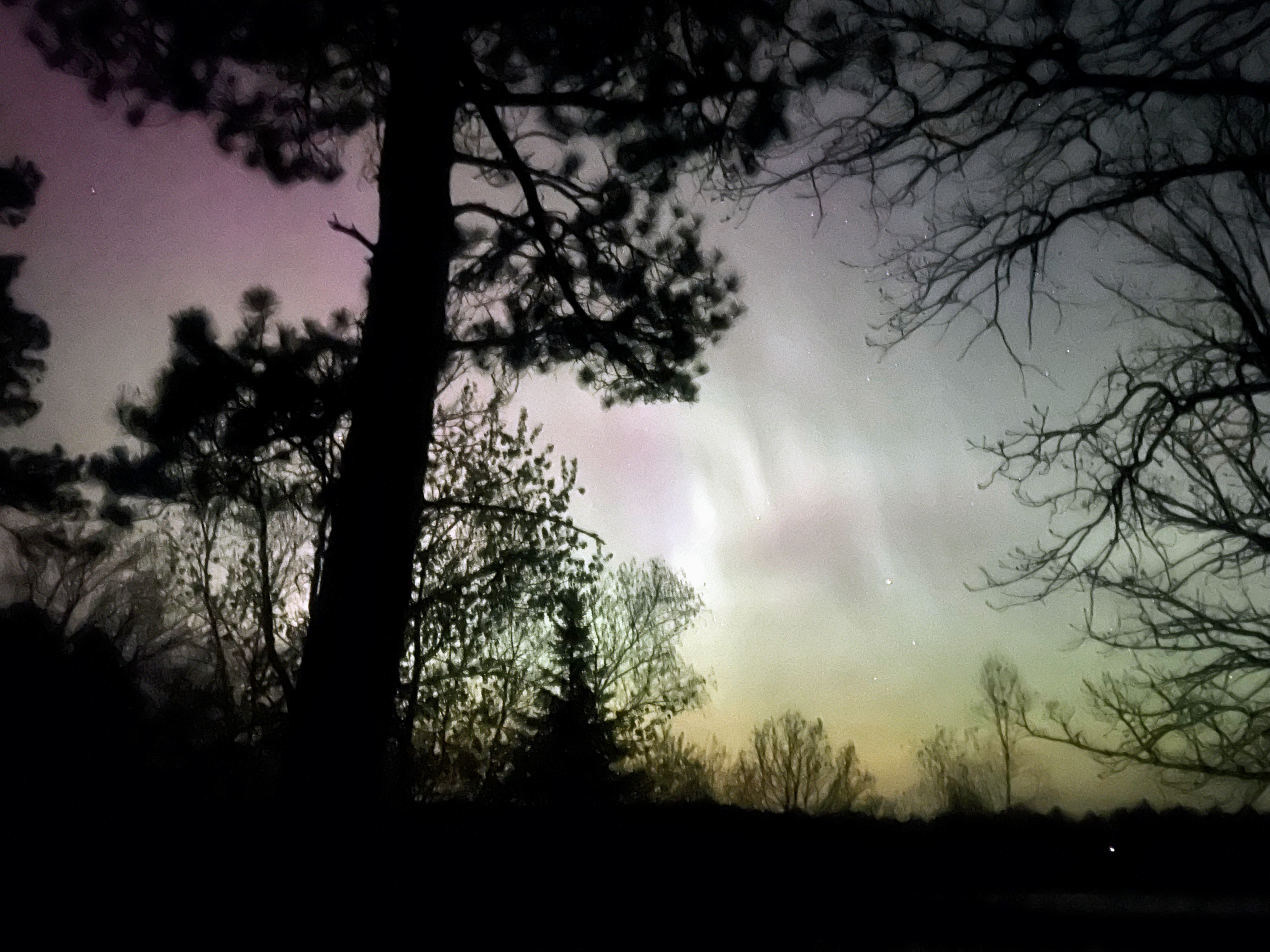
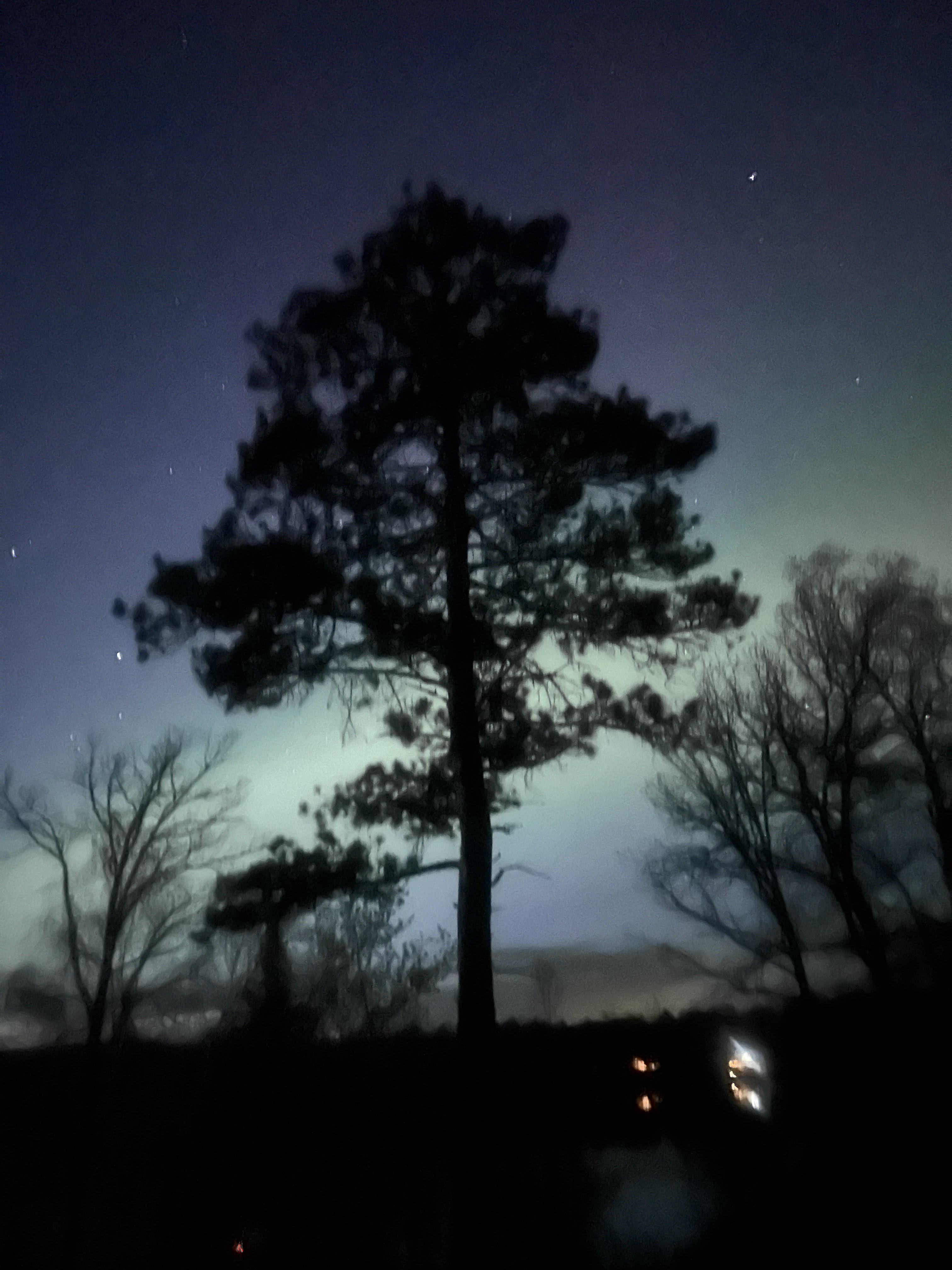
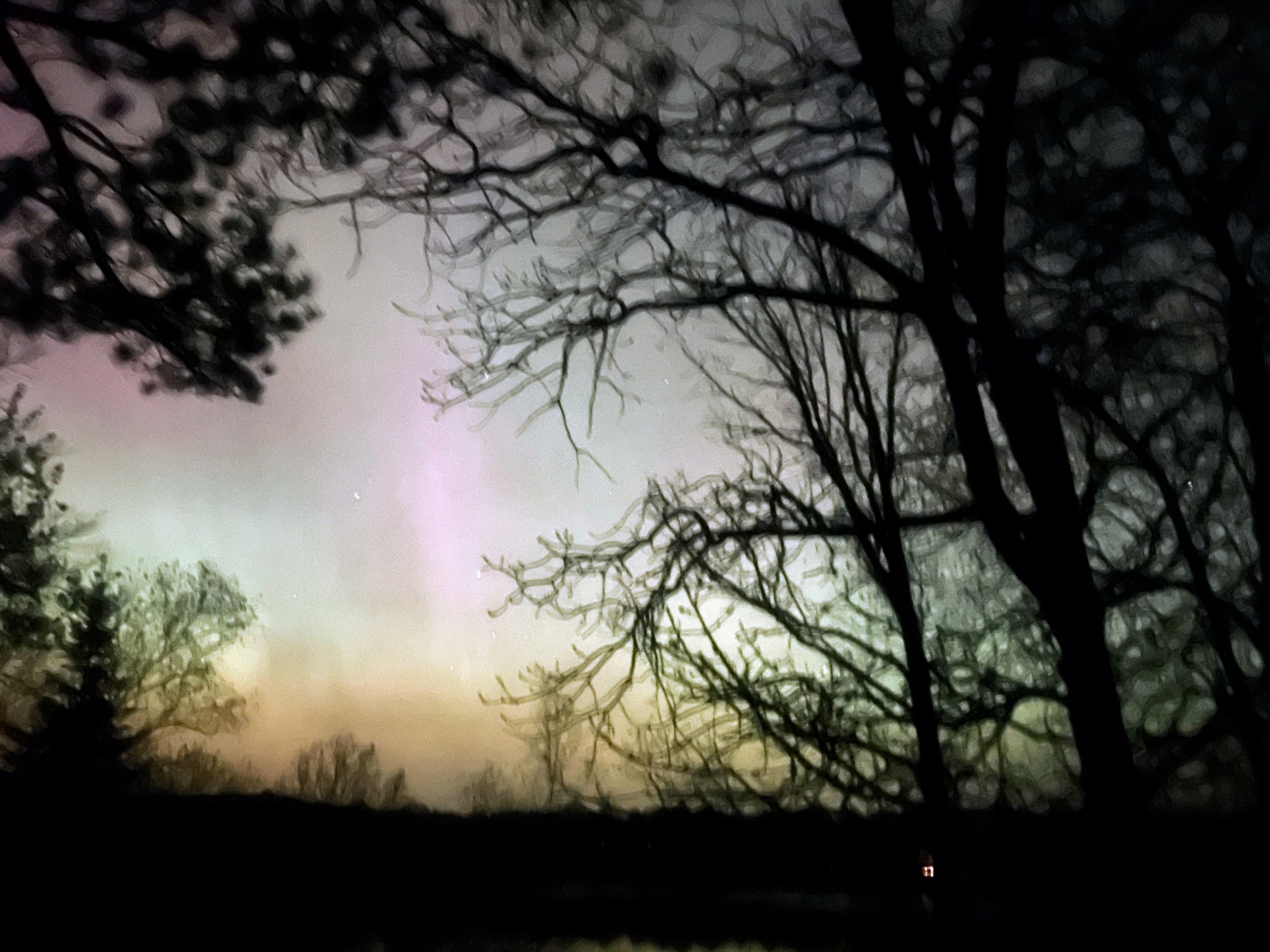
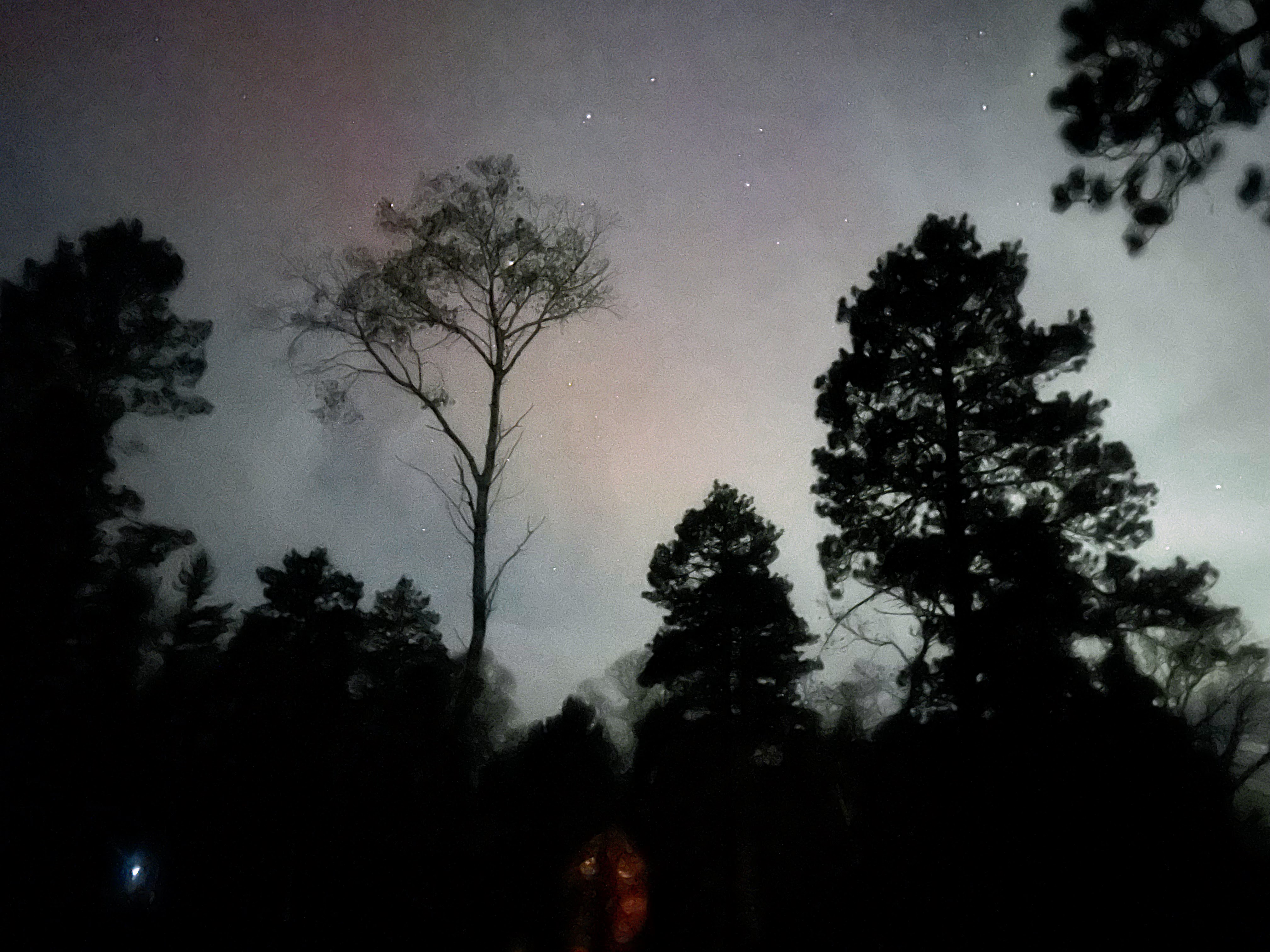
The following night the Northern Lights made the sky brighter, but colors were not as evident.
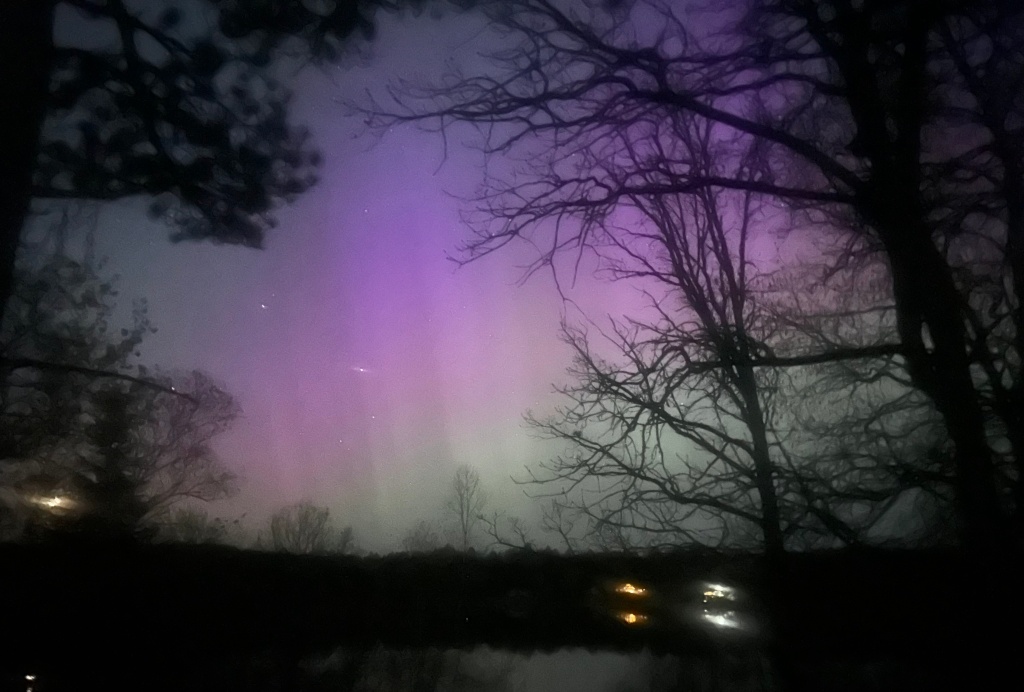
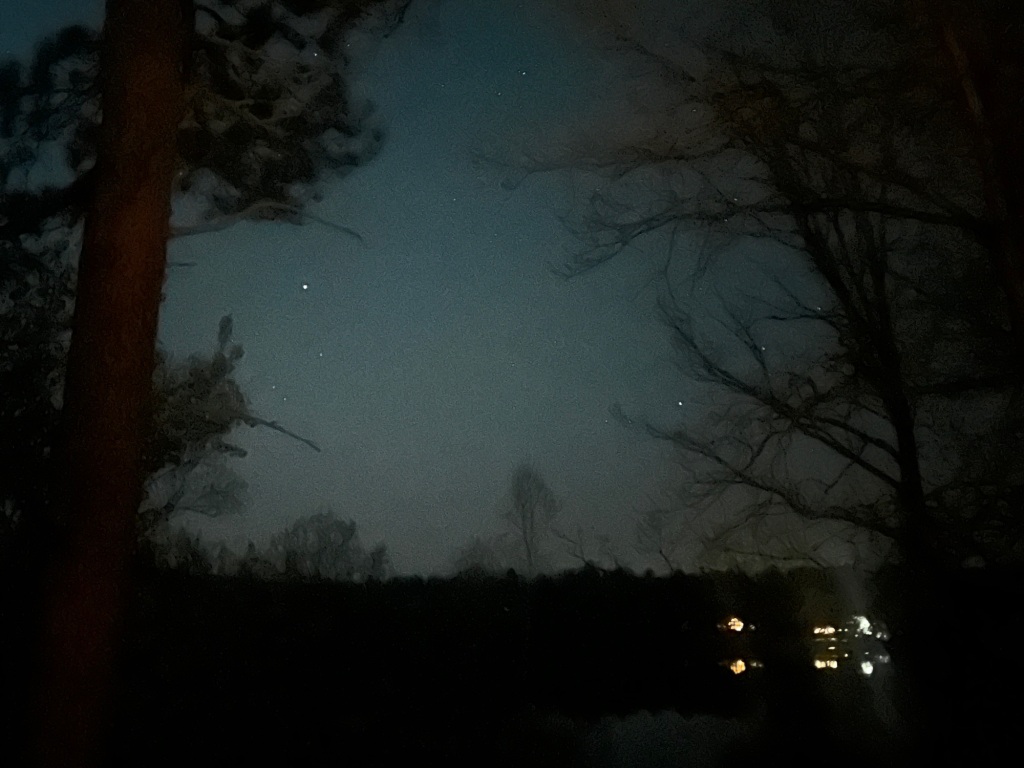
The photos above were taken of about the same view, looking north across the lake. They show the contrast in the night sky from Friday, May 10, with Northern Lights, to Monday, May 13, under normal conditions.
Note about low light photos taken by iPhone
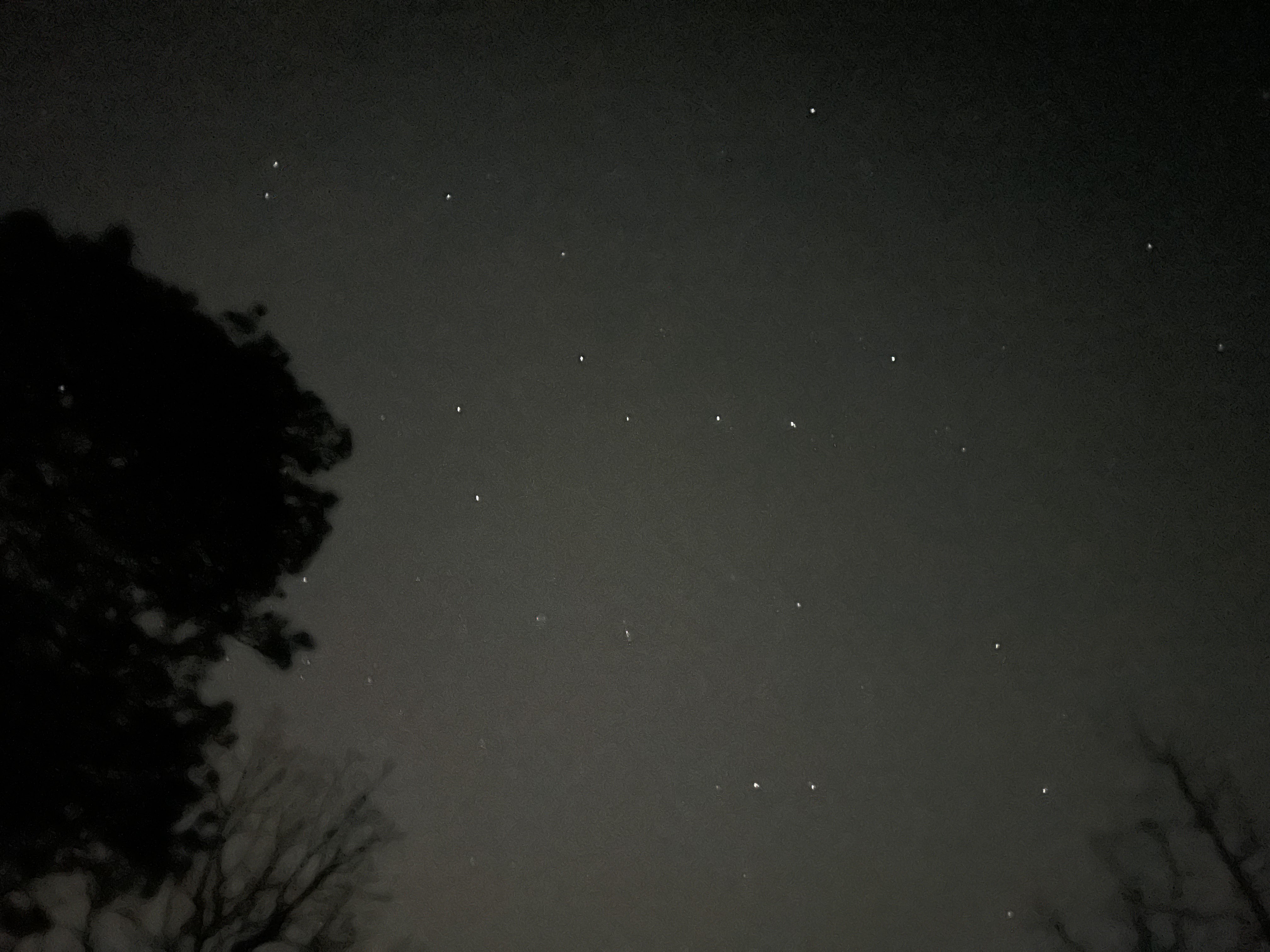
All these photos were taken with my iPhone, with no special preparation or settings. It must automatically use digital processing to allow fairly sharp hand-held long exposure shots, as seen in these photos of the Big Dipper.
